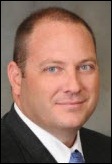"A valid concern..." Oh please. Everyone picks the software they like and the origin of that software is an afterthought.…
Readers Write 8/24/11
Submit your article of up to 500 words in length, subject to editing for clarity and brevity (please note: I run only original articles that have not appeared on any Web site or in any publication and I can’t use anything that looks like a commercial pitch). I’ll use a phony name for you unless you tell me otherwise. Thanks for sharing!
“Installing IT” Understates the Organizational Change that IT Can Bring
By Mike Quinto
Our organization recently underwent an $18 million turnaround in 24 months. We are very proud of this accomplishment and have no intention of stopping there.
In a recent financial periodical, our CFO was quoted as saying, “Considerable attention has also been given to IT. In the past, top-of-the-line software products purchased for the radiology, pharmacy, lab and other areas were highly functional in their own spheres, but didn’t integrate well. Now, new integrated software is being deployed to improve communication among departments.”
Well, he said it was IT. In reality, we in IT focus on getting cross-functional teams working together to solve business challenges. IT has been the facilitator of organizational change through process redesign, not new fancy software that adds, subtracts, multiplies, or divides better.
Software, for the most part, does not “…improve communication among departments.” Governance, change management, and cross-functional teams do.
We implemented Lawson’s ERP suite, but the largest benefit was not gained from the new splash screen or the logo in the corner of the screen. Vendors tend to think that they have solved the same old problem with new fancy software. It is rare that there is disruptive technology that actually changes the way we do things. For the most part, software is a commodity. The real benefit is the implementation and process redesign that takes place during a system rollout.
The opportunity was the chance to focus on charge capture and develop a policy, process, and strategy around it. We could have used a spreadsheet — the technology was not a magic bullet. The focus on business strategy was.
Don’t get me wrong, we like Lawson as a vendor. However, the software had little to do with our transformation. It was the implementation process that allowed open dialogue about the way we do things, and the way we should do things. That opportunity allowed us to evaluate broken process, identify areas that there was poor or no communication, and establish governance around important operational metrics. Just getting HR and Finance in a room monthly has done wonders to find financial opportunity and redefine policies and process.
In one case, we had two vendors blaming each other for an outrageous claims denial rate. QuadraMed and McKesson couldn’t get on the same page, and that was creating a claim that had fields transposed. This created a denial rate that was almost 100%. I don’t blame the vendors. At the end of the day, we had a department that was not communicating and working with a broken process.
Once we “re-implemented” the software, we were able to have open, honest conversations about who needed what and how the billing office should be run. Yes, there was an interface issue; however, IT and the business office were not talking. That was the larger issue.
We put in place weekly change management meetings, assigned application owners for each operational department that has an IT counterpart, and implemented basic project management. These changes had more to do with the performance improvement than any single piece of software, hardware, or vaporware we could install.
To say we purchased IT and installed it is underestimating the organizational change that “IT” can bring.
As a CIO, I spend most of my time helping business units redefine their goals, processes, and governance. Very little of my time is spent with bits and bytes.
Mike Quinto is VP/CIO of Appalachian Regional Healthcare System, Boone, NC.
PDF Healthcare: Why PDF is the "Currency" of Health Information
by Tom Lang, MD
Health information technology faces challenges from many different quarters and for many different reasons. It’s time for a major dose of simplicity. PDF Healthcare (in both static and dynamic modes) is this major dose of simplicity.
Here are two compelling reasons that PDF Healthcare lives up to its billing as a "secure container for the exchange of healthcare information."
PDF is easily viewed/printed from virtually any computer. With the ubiquity of PDF readers, this is a reality. This fact can be thought of as another approach to interoperability. That is, if we can simply turn healthcare information into PDF, that information is available in a human readable form. Last time I checked, humans were still taking care of patients.
Image and other unstructured data files are easily converted to PDF. Clinical medicine is a world of image files and unstructured data, and that will never change. For example, our universe is filled with EKGs, X-ray images, video clips, audio files, and text-based reports Equally important are those medication and allergy lists that are scrawled on scraps of paper (yes, paper!) that are so important at the point of care. The fact that PDF supports image files and almost any type of file format is very important in this environment.
PDF (Portable Document Format) was originally developed by Adobe Systems Incorporated, but released as an open ISO standard in 2008. This has been an important step to stimulate innovation and competition, making PDF more capable, affordable, and available for our use in health IT as well as other industries.
As an ER physician, let me give you one example of how PDF can jump over the top of interoperability problems.
I do quite a bit of locums ER work in many settings and frequently find myself in small rural hospitals trying to communicate with specialists that I need to refer patients to over a distance. Probably the biggest slam dunk for HIT has been PACS, which even in the smallest hospitals is almost universally present.
One weekend, working in very small rural hospital, I faced the same problem twice: I saw patients with complex fractures, and the question was, "Does this patient need surgery immediately, or is this something that can be splinted and taken care of in a day or two?” Orthopedics is not available at this small hospital, and these patients requested orthopedic care in different directions.
I was easily able to contact the orthopods by phone, but they needed to view the films to make a decision about what needed to be done and how urgently it needed to be done. This hospital has PACS, but despite this, neither of these orthopods could view the images. In this case, which is the most common arrangement I see, the only person who had remote access to view the images was the radiologist who was contracted to officially interpret the study ("Dr X not credentialed, hospital not on this image sharing network … blah … blah … blah").
Because the radiology tech for the day was a hacker of sorts, he had some screen capture and turn-to-PDF programs on one of the radiology monitors. In both cases, we brought the images we needed on the screen, took a screen shot, turned the file to PDF, and e-mailed to the orthopedist. Also in both cases, not only were the orthopedists delighted we could provide this to them, but we determined that both patients could be splinted and dealt with in 1-2 days rather than immediately, saving many parties much trouble.
In order to raise the level of awareness of PDF Healthcare, colleagues from the PDF Healthcare working group have arranged, for a limited time, to give away a simple little app that will help HIE in the trenches. We are doing this for the solo / small doctor office. As a special for HIStalk readers, we will give away 50 copies.
Here is a short video that outlines the functionality of this app.
For your free copy, be one of the first 50 to go to the PDF Healthcare site and scroll down to Health Information Aggregator (under the heading of Resources.)
Tom Lang is an ER physician and a member of the PDF Healthcare working group.
This Way to a Better Patient Experience
By Jeff Kao
Everyone’s been lost at one time or another. Whether you’re far from home or just around the corner, the experience is universally the same, with plenty of stress, aggravation, and wasted time.
Thankfully, the advent of navigation systems and smart phones means most of us get lost much less frequently these days, and that’s a good thing. But what about when you’re off the grid, say trying to find a family member’s hospital room or a lab for a blood draw?
Few places are as massive and confusing as a medical campus. With countless floors, departments, and even buildings to navigate, locating the desired destination can be a daunting task. On top of these logistical challenges, patients often arrive at a medical office or hospital feeling rushed, unwell, or anxious about their visit, only compounding the situation and causing them to be late or to miss appointments altogether.
Wayfinding systems offer a viable solution and pick up where navigation systems leave off. From the moment a patient or visitor walks in the door, these self-service kiosks virtually map paths to and from multiple points in a facility, resulting in a more pleasant and personalized experience. Leading healthcare organizations like Chicago-based Northwestern Memorial Hospital have placed wayfinding kiosks near entrances and other common areas, making it easy for patients and visitors to quickly locate a specific room or department and print a customized map with step-by-step directions.
At a time when consumerism is on the rise and patients have greater flexibility in their choice of healthcare provider, such systems are fast becoming a valuable strategic asset. According to a survey conducted by The Beryl Institute, hospital executives list the patient experience as one of the top three priorities they will focus on over the next three years. Wayfinding systems directly impact the experience patients and visitors have by enhancing the level of service that’s provided and eliminating the hassle of being late or lost.
Beyond guiding patients to the correct destination, wayfinding systems can also reduce demands on staff time, both in terms of time spent giving directions and updating software. While some wayfinding systems once required users to manually re-create maps on each kiosk every time an office or department was moved, today’s dynamic, data-driven applications are extremely scalable and allow technical and non-technical staff alike to quickly recalculate routes on the fly.
When not in use for wayfinding, these systems provide an effective venue for displaying video or text-based messages and marketing medically-related services and events. Patients can also use kiosks to register for promotions or request additional information. And, once in place, wayfinding systems establish a platform for future expansion and growth, eventually allowing healthcare providers to add new self-service capabilities from the same screen.
So, what is the path to a better patient experience? The answer may be inside your own front door.
Jeff Kao is vice president and general manager of NCR Healthcare.
Specificity to the Extreme: As ICD-10 deadlines Draw Closer, Is Your Organization Ready for the Good, the Bad … and the Offbeat?
By Sean Benson
Chances are that most healthcare organizations will be able to raise the bar on current documentation practices high enough to support coding for suture of an artery under ICD-10—even though the possible codes expand from just one under ICD-9 to more than 180 under the new code set. But what if a patient walked into a lamp post (W22.02xA) or was bitten by a sea lion (W56.11xA)? What if the patient was burned by a flaming jet ski (V91.07 xA) or suffers from inadequate sleep hygiene (Z72.821)?
If your organization’s clinical documentation and coding processes can’t support that level of specificity, you need to act fast to get it up to speed. Because rest assured, no matter how weird the diagnosis, ICD-10 includes a code that accurately defines the patient’s status to a T.
The authors behind ICD-10 covered all the bases in an effort to capture the full patient picture—sometimes to the extreme and offbeat. With approximately 68,000 diagnosis codes compared to just 13,000 under ICD-9, it’s clear that documentation approaches that work fine today simply won’t cut it under ICD-10.
It will be complex enough to ensure coding staffs are adequately trained on ICD-10. Finding the resources necessary to advance clinical documentation improvement programs to meet the ICD-10 challenge is simply out of the question for many organizations. Nor are most clinicians interested in spending the amount of time required to become fully proficient on the new system, especially when it takes them away from patient care.
That is why many hospitals and healthcare facilities are looking to software vendors to help them make the transition. Software that automates the documentation and coding process can ease the transition to the expanded code set and shorten the learning curve for physicians, especially if they are faced with the ever-so-common encounter of a patient who has been struck by a bird (W61.92).
Not all coding and documentation software is created equal. The best ones will drive comprehensive documentation to capture the high level of detail required under ICD-10. The software should guide physicians through the process of documenting with enough specificity and granularity to ensure appropriate coding. Otherwise, the code that would accurately identify an embarrassing fall on the local airport’s escalator (W10.0xxA) might be missed.
Healthcare organizations will want to focus on the software’s ability to provide prompts relevant to the documentation needs of ICD-10. That is why it’s important that the evaluation be done by someone who is well-versed in ICD-10 to ensure the right questions are asked.
There are multiple initiatives competing for the attention and resources of healthcare organizations, including 5010 and Meaningful Use, in addition to ICD-10. Because it will affect every aspect of operations, the transition to ICD-10 needs to be placed at the forefront.
For many organizations, leveraging the efficiencies inherent in technological solutions to drive documentation improvement is the best strategy for meeting the ICD-10 challenge head-on.
Sean Benson is co-founder and vice president of consulting with ProVation Medical, part of Wolters Kluwer Health.






Four very good, useful and well written articles.
Thanks!
Best,
Don
I loved this quote from Mike Quinto, “the technology was not a magic bullet. The focus on business strategy was.” Well stated.
Mike,
Nice piece…and great success. Just goes to show that ‘CIO’ really stands for chief Integration officer…if you don’t buy that, then it’s Career Is Over.
Keep up the good work.
Good sales pros have been telling Hospital Exec’s Mike Quinto’s message for years. You can tell he used to be one of us! Good job Mike!
I couldn’t agree more with Mike Quinto. I believe his article will be referenced in days and years to come. Organizations that believe a new system will solve their problems have their heads in the sand, or perhaps they are more interested in personal survival than the organization’s health. Bringing together cross-functional teams is the only way to ferret out the buried treasure, to peel back the layers of the onion and unravel what years of complexity and more systems have created. Thank you for speaking clearly to this.
Regarding PDF Healthcare, anyone who has any concerns about the security of the PHI has to shudder at the ease with which a “hacker of sorts” can go into specific clinical information, screen capture the data, and then package it up in a .pdf to e-mail it out into the world at large. Is there an audit trail for this activity and how do we know where it went. It all sounds good in theory, and the free flow of information has major benefits for actual patient care, but the potential for abuse is daunting.
Privacy experts need to better understand the clinical impact of their restrictions, but clinicians also need to understand that if we allow for the free flow of information in the electronic age, that patient privacy is DOA.
@LFI Masuka – You’ll find that HHS ONC has both CONNECT Open Source and Direct Project aspects of NwHIN hard at work to provide excellence in assuring the patient privacy we all expect. Even PDF Healthcare is rigorously defined to work well within both current and expected HIPAA protections. We believe that Dr. Lang’s work to show simplicity of info assembly and viewing will make it much easier to assure privacy and security (compared to the many high complexity solutions). Don’t expect anyone to be just e-mailing health info – THAT is widely understood to fail the privacy and security restrictions!